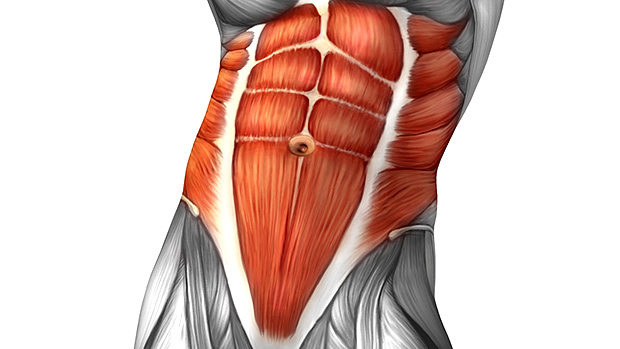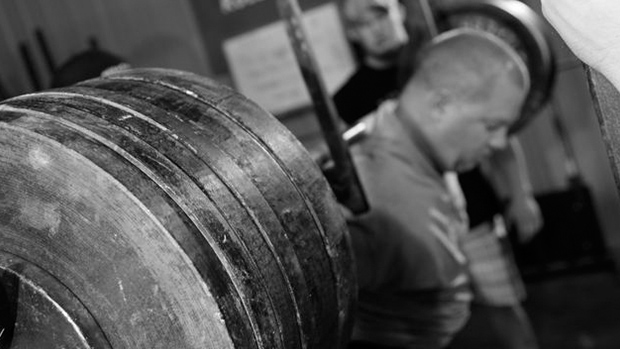As a lifter, you have knowledge and experience with technique and programming. You know about proper form and the organization of exercises and training sessions that work for you.
But after this solid foundation has been built, the opportunities for growth and progress are mental, not physical.
Sure, you'll always benefit from getting refreshers on a proper form, nutrition, and programming. But the real source of making gains, changing your body, and evolving your fitness lies in your ability to prioritize, motivate, execute, and repeat. And repeat. And repeat!
Those functions are psychological in nature.
Psychological or mental skills are intentional thinking strategies that enhance performance, increase enjoyment, and promote persistence in pursuit of goals. Athletes commonly use mental skills for sport performance, and fitness professionals and enthusiasts can use them just as easily and effectively.
There are a variety of mental skills, but three of the most widely used and studied are:
- Imagery/visualization
- Arousal/activation regulation
- Self-talk
Let's go over each one with a suggestion or two on how to implement them into your current training habits:
Also known as "mental rehearsal," imagery is a skill that researchers have studied extensively in sport psych settings, and which has repeatedly been shown to enhance performance and make sports and exercise more enjoyable (Weinberg, 1981 and 2008).
When you mentally rehearse, you create or recreate an experience in your mind. This could be an optimal performance from a real memory, or an ideal performance you've created with your imagination.
Using sounds, sights, sensations, and even smells, you draw on your senses to experience success and to practice execution of a skill in your mind. You can use imagery before a workout or just before a specific lift or movement. If you compete, you can mentally rehearse on rest days, during warm-ups on practice days, and pre-performance during competition days.
How to Do It
Working on one of "the big 3" lifts? Or your pull-up? Visualize yourself executing it perfectly just before you practice. Let's take the deadlift as an example.
See yourself approaching the bar... planting your feet... getting your air... getting your hands on the bar and pulling the slack out... driving your heels down... pushing off the floor... finishing with the hips... Bam!
Visualizing your lift can build confidence, prime your thoughts and expectations for success, and increase the practice (or "reps") you get with the exercise.

All of us have an optimal level of energy that helps us perform our best. Think of a scale of 0-10. If zero is almost asleep, super relaxed, and chill, and 10 is about-to-explode, crazy amped and way-too-anxious, what number represents the ideal level of energy for strength training?
Is this different than the ideal energy level for cardio? How about while you're at work or reading and learning?
The point is that there's a specific point along this 0-10 scale at which you'd perform your best, and you can engage in anxiety-reduction and arousal-inducing techniques to slow yourself down (or pump yourself up) in order to do your best.
When the pressure is too high and you're overly activated (nervous, jittery, anxious, panicky) the risk for error is higher and enjoyment is lower. When there's not enough pressure, you may feel flat, fatigued, or unmotivated, which can lead to underwhelming effort and performance.
How to Do It
The next time you're competing, or even performing an exercise that you want to improve on, assess your energy/arousal level on a scale of 0-10. Then, ask yourself what the optimal energy level would be.
If the number needs to be higher than it currently is, you can increase activation by increasing your rate of breathing, listening to music that's energizing, or giving yourself a pep talk.
If the number needs to go down, you can try progressive muscle relaxation (PMR), wearing a heart rate monitor and attempting, with your focus and breath, to slow your heart rate 5-10 beats per minute, or creating a relaxation response (Benson & Proctor, 1984) by finding a quiet space to sit, breathe, and slow down your thoughts and your body.

That little voice inside your head – you know it. That's the constant internal monologue that makes appraisals, passes judgments, and makes recommendations about what to do next.
These thoughts and meta-cognitions are central to what make us human. Our self-talk helps us to function at work, in relationships, and in our daily lives. But sometimes (or often) self-talk can become overly-negative and critical, and can get in the way of performance, not to mention enjoyment.
One of the most common topics I speak on with athletes, executives, and lifters is the damaging effects of negative self-talk and how to correct it. Here are some common examples of negativity (Burns, 1999):
- Black or White Thinking: Thinking only in extremes (all-or-nothing) thinking.
- Arbitrary Inference: Generalizing one negative comment or experience to be representative of everything in your life.
- Mental Reading: Presuming you know what others are thinking.
- Catastrophizing: Thinking that the absolute worst thing that can happen, will happen.
- Emotional Reasoning: Presuming that feelings are facts.
- "Shoulds": Focusing on how things "should" have gone down, as opposed to how they actually are.
Any of these thought patterns sound familiar? Also known as cognitive distortions (Beck, 1963), these styles of thinking often lead to discouragement, frustration, anger, sadness, and a slew of other negative emotions. When you're discouraged and thinking negatively, you're less likely to take a risk, push yourself hard, or persist with a challenging goal.
Recognizing your own tendencies to think negatively is the first step. Once you've identified some problematic thinking, consider the impact those thoughts have on your own feelings, and then in turn your emotions' impact on your behaviors.
Call Yourself Out
Here's what to do. First, identify what you get out of your negativity. Is that productive? Helpful? Beneficial for anyone or anything?
If not, reframe your thinking using these steps:
- Identify the negative thinking. When you notice it – either running through your mind or spilling out of your mouth – say to yourself, "I notice some negativity here... hmmm..." Just simply noticing the negativity can help you slow down and even stop it.
- Look at the data. Change your perspective so that you can observe the negative thought from an objective place, as if you were a scientist and the thought was a piece of data. What is that thing? Where's it coming from? Is it productive and in support of your goal?
- Reframe, regroup, and move forward. You can change your thinking! Remind yourself, "It's a feeling, not a fact." Or, "Oh! I'm just beating myself up because sometimes I just do that. I can switch gears and shift my train of thought." When you use your thinking for good, and create new, positive thoughts that lead to productivity, you're able to unstick yourself and continue moving forward.
- Focus on the present moment. Think about your tasks, not your appraisals/opinions/criticisms. This can be helpful at work and during other challenging times in life, but it's especially effective at the gym. If you're thrashing yourself and/or beating yourself up about your weight, your plateaued progress, or some other outcome, shift your thinking to what you are doing in the present moment.
Have you been using some of these already, without any training in mental skills? Do you see anything that could help you with your workouts and want to give it a try? I hope so! So, try sampling one or more of these mental skills in your workouts. It's a risk-free way to enhance performance and enjoy your workouts more.
And when THAT happens, you'll be able to stay motivated enough to continually execute the training that'll lead to making more gains, changing your body, and evolving your fitness in any direction you choose.
- Beck AT. Thinking and depression: I. Idiosyncratic content and cognitive distortions. Arch Gen Psychiatry. 1963 Oct;9:324-33. PubMed.
- Benson H. Beyond the relaxation response. Berkley, New York. 1984.
- Burns K. The Feeling Good Handbook. Plume, New York. 1999.
- Weinberg RS. The relationship between mental preparation strategies and motor performance. A review and critique. Quest. 1981;33(2):195-213.
- Weinberg RS. Does imagery work? Effects on performance and mental skills. Journal of Imagery Research in Sport and Exercise. 2008 Jan;3(1):1-20.





